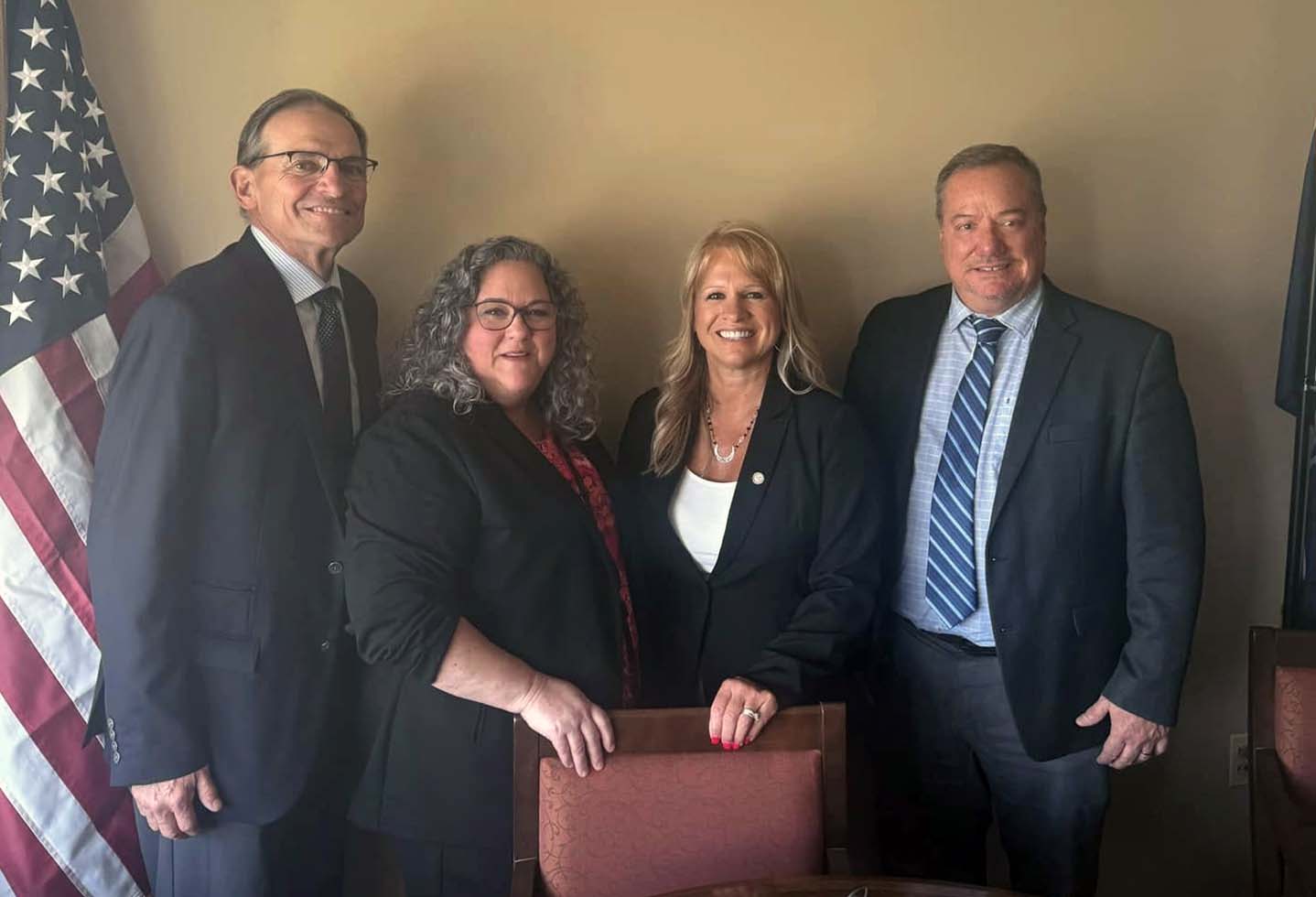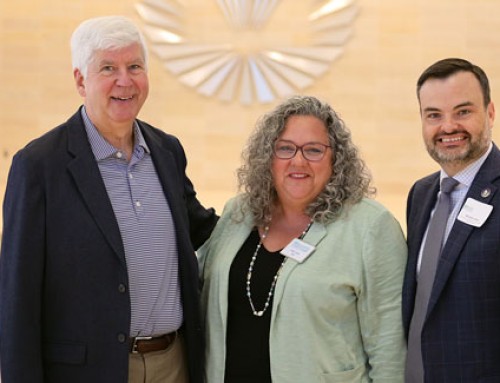Macomb County Leaders Present Vision for the Blue Economy To State Lawmakers
On May 7, Kelley Lovati, president and CEO of the Macomb County Chamber, joined Steve Remias, president of the Lake St. Clair Tourism Initiative and retired president of MacRay Harbor, and Gerry Santoro, program director of Land & Water Resources for Macomb County Planning and Economic Development, to present an update on Macomb County’s Blue Economy to the Michigan House Natural Resources and Tourism Committee.
Representing the Blue Economy Task Force, a broad coalition of over 75 community members from major sectors, the trio showcased how Macomb County is maximizing the economic and community potential of Lake St. Clair and its waterfront assets. The initiative, which began during the Great Recession in 2007, has grown from a regional tourism response into a comprehensive strategy for economic growth, environmental stewardship and community development.
Dr. Lovati emphasized the strong partnerships that have moved the Blue Economy forward. The Macomb County Chamber plays a key role in uniting business leaders, marinas, environmental advocates and local government to strengthen the region’s identity as a freshwater destination. She highlighted the Circle Lake St. Clair Tour and the growing interest in waterfront development as examples of how the private sector is helping shape the region’s future.
Remias, who helped launch the Lake St. Clair Tourism Initiative, outlined the economic power of water-based tourism and recreation. Lake St. Clair now hosts nearly 1.5 million marina visits annually, with 44 percent of visitors coming from outside the county. The lake has also become a world-class fishing destination, hosting 12 internationally televised fishing tournaments and seeing a 620 percent increase in state-licensed charter fishing boats since 2012.
“Lake St. Clair is no longer a hidden gem—it’s a premier destination that continues to grow in national recognition,” Remias told lawmakers.
Santoro detailed the public and philanthropic investments that have improved shoreline resilience, restored habitats and enhanced public access. Since 2010, more than $50 million in federal Great Lakes Restoration Initiative funds and $132 million in local public works investment have supported ecological projects throughout the region, including Ford Cove, Lake St. Clair Metropark and Brandenburg Park. He also introduced findings from a 2024-2025 Lakefront Hotel and Conference Center Study, which recommended attracting a waterfront resort development to support tourism, business events and year-round economic activity.
Looking ahead, the Blue Economy Task Force is focused on expanding waterfront access, creating more multi-use trails, supporting recreation in all seasons and encouraging mixed-use development along the shoreline. With Lake St. Clair’s unique freshwater appeal, Macomb County is working to grow its reputation as a hub for sustainable economic growth and a top destination for regional tourism.
To view the full presentation, visit house.mi.gov Video Archive and start at minute 53.






